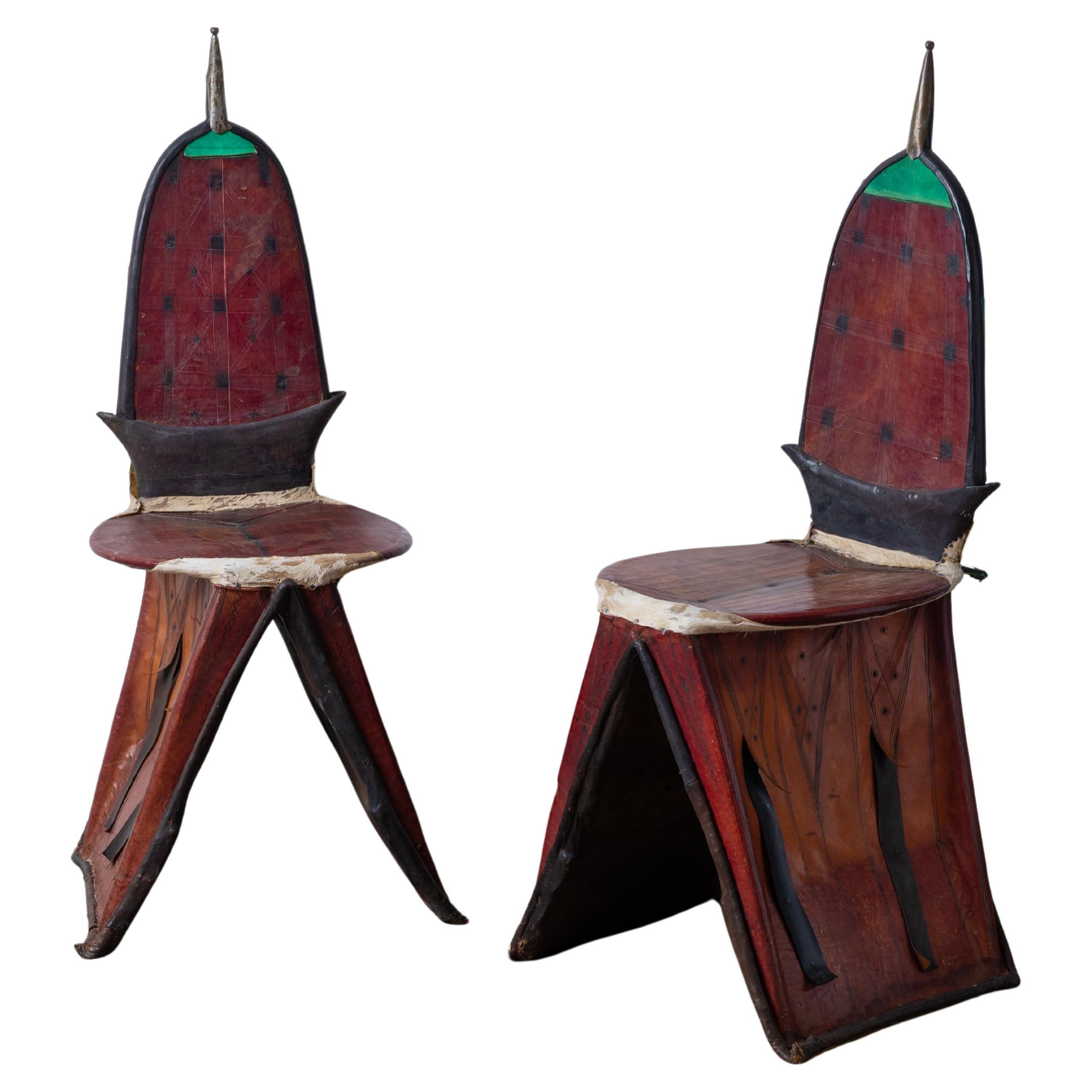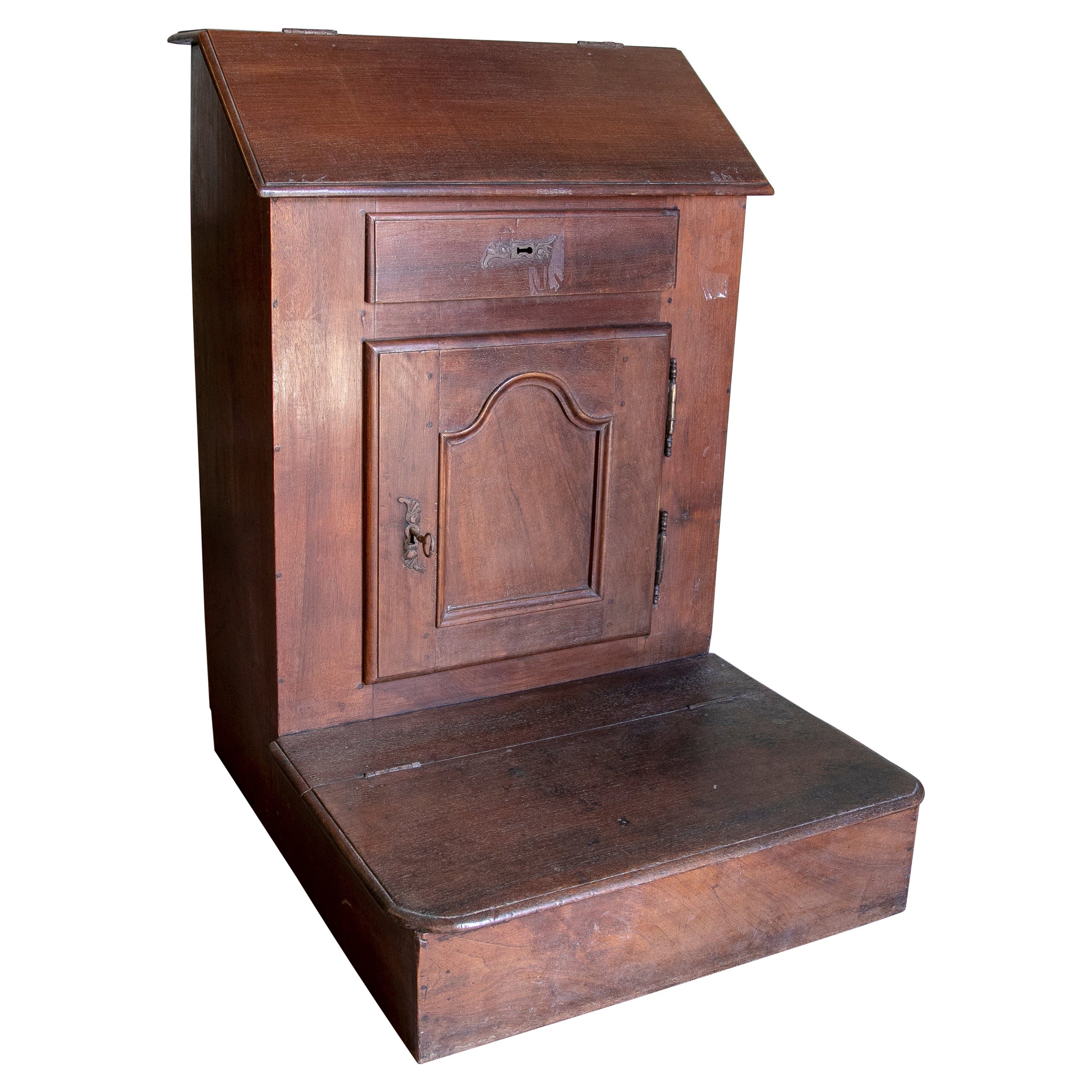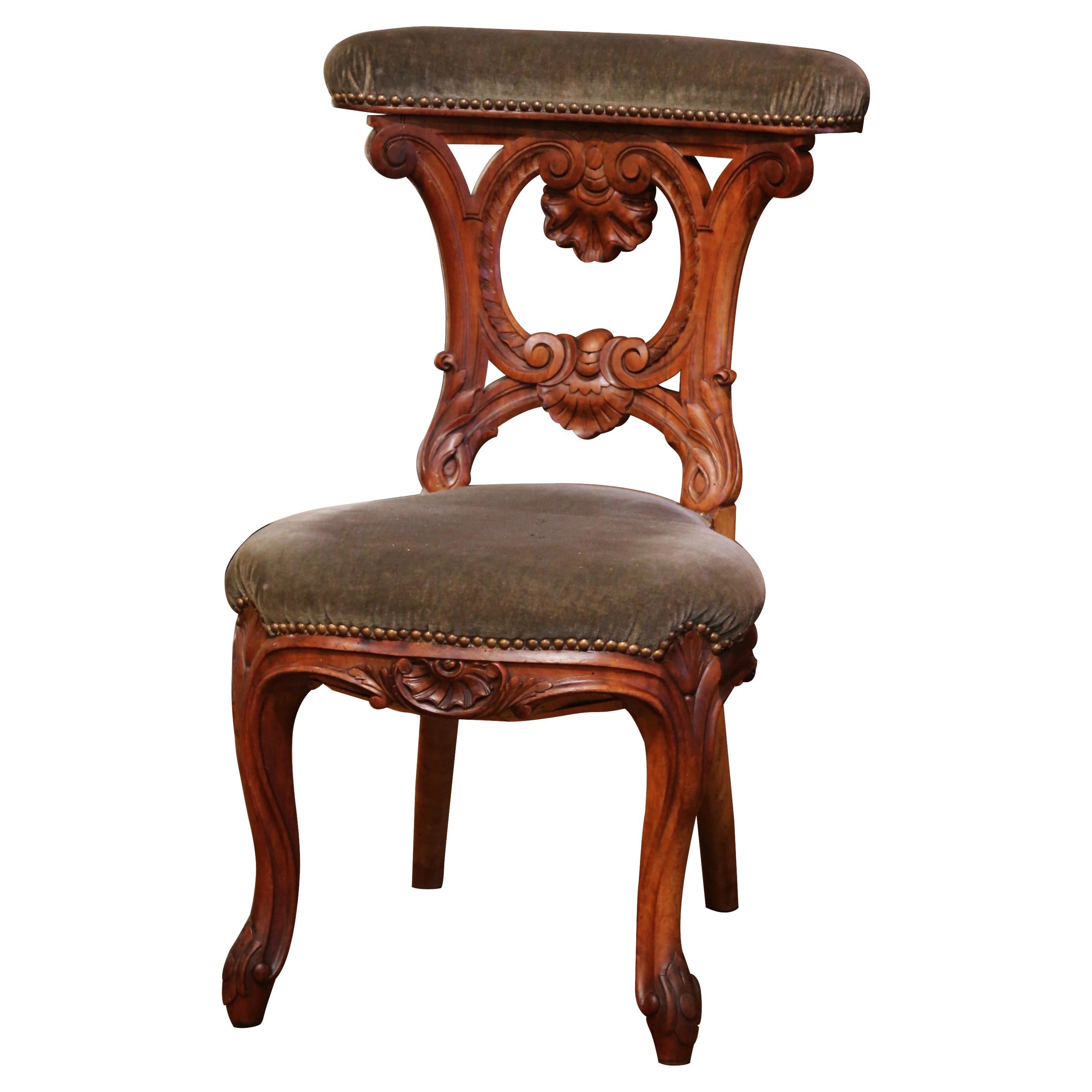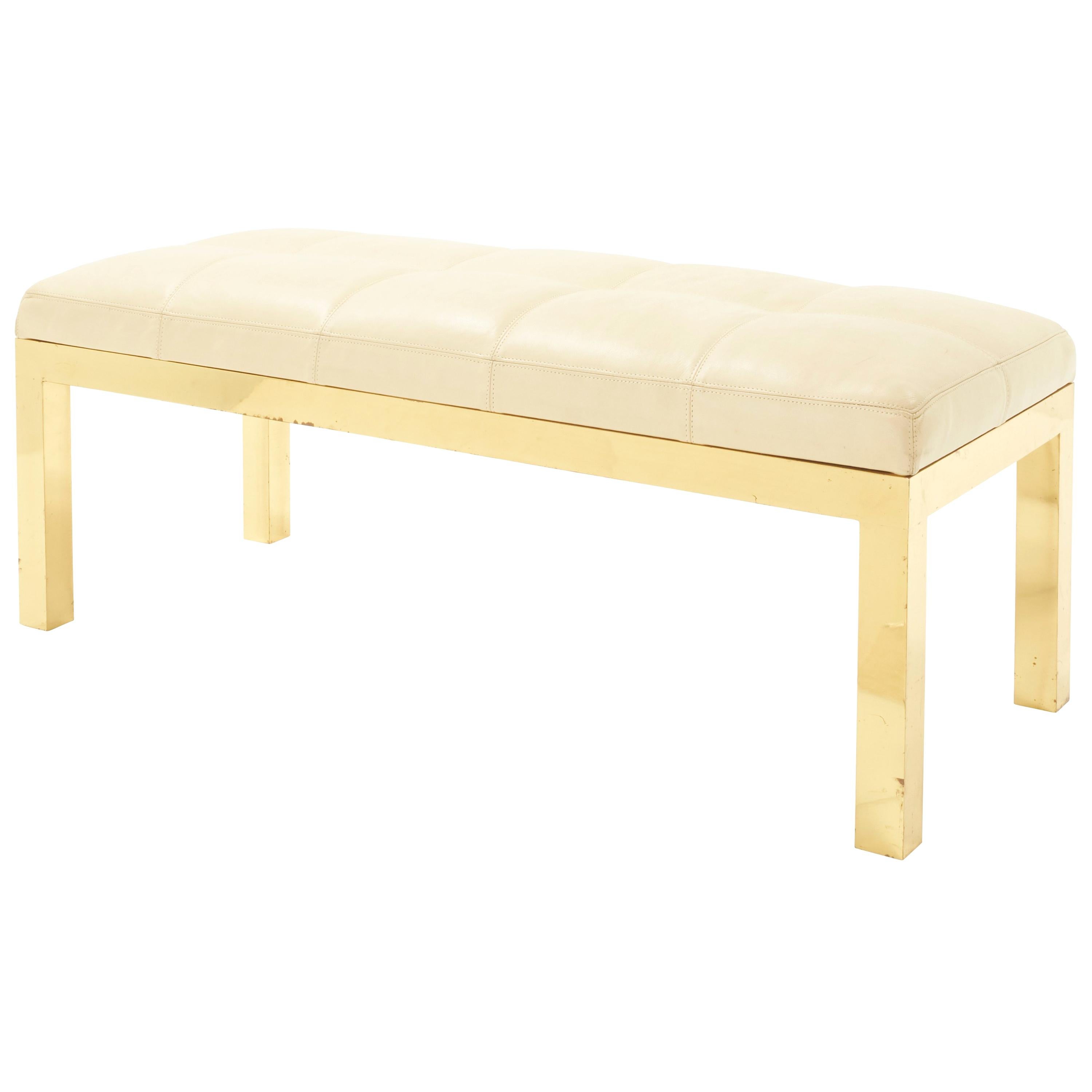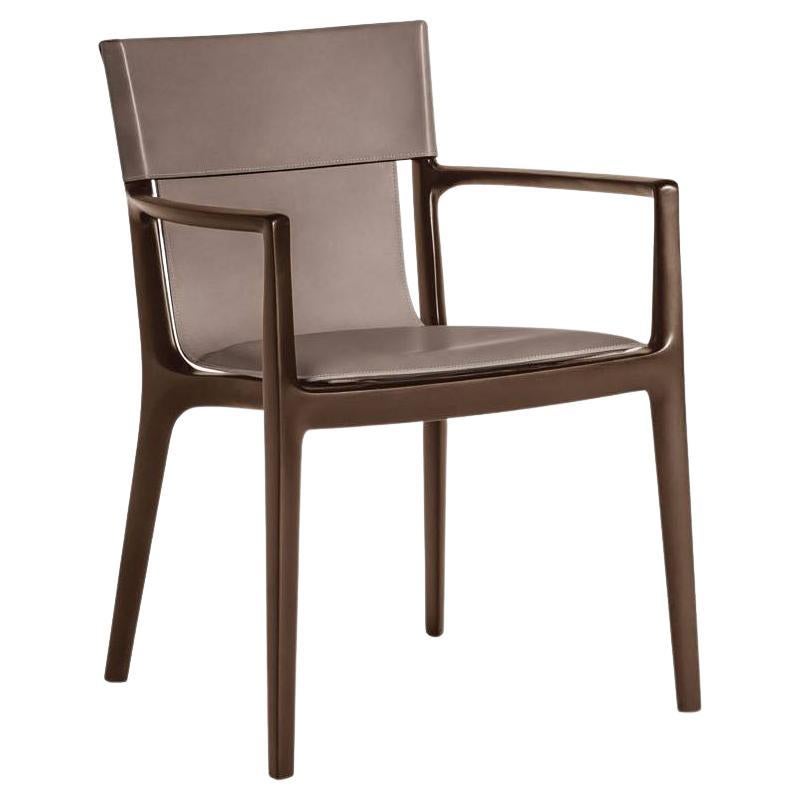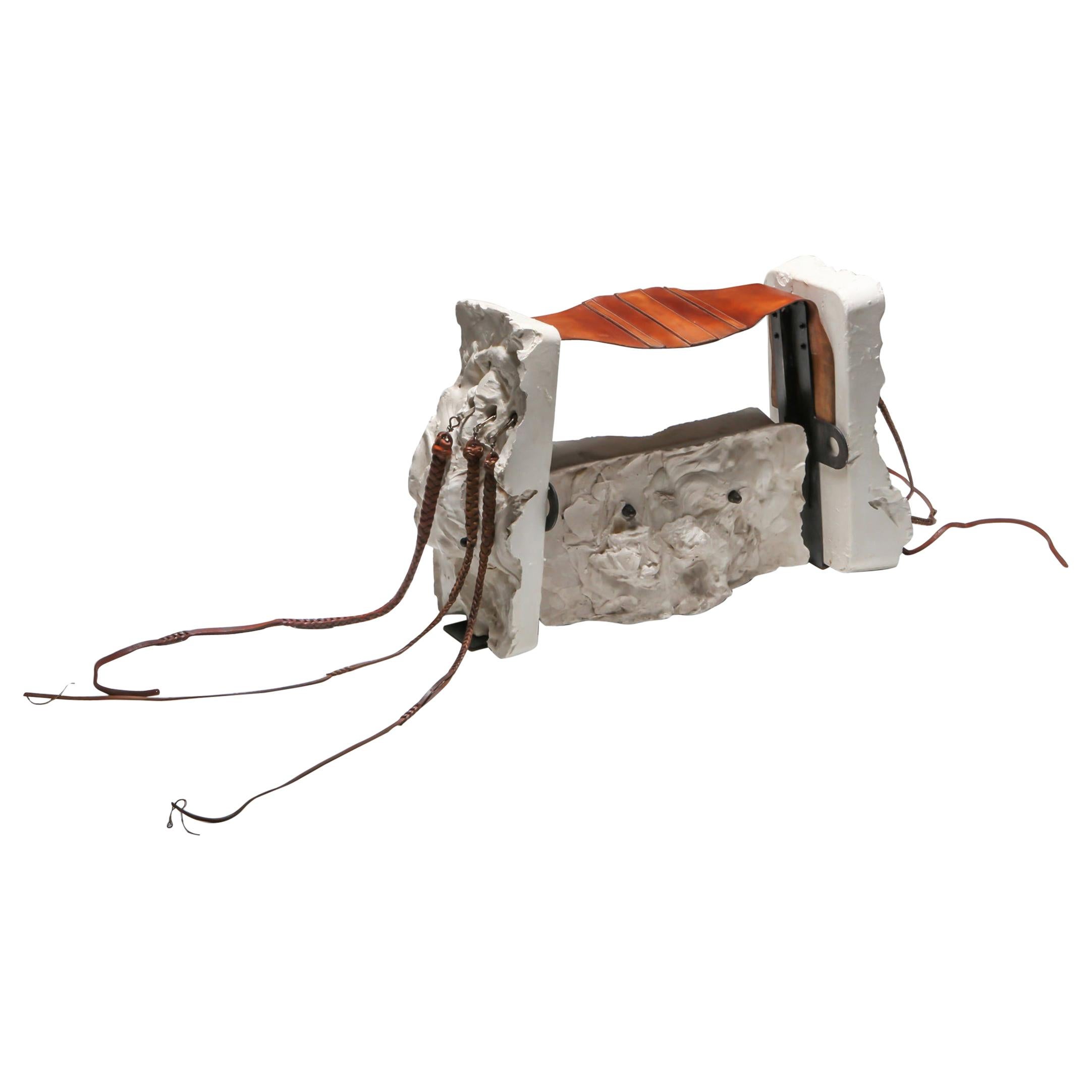Items Similar to Saudi Arabian Camel Saddle with Camel Whip
Want more images or videos?
Request additional images or videos from the seller
1 of 7
Saudi Arabian Camel Saddle with Camel Whip
About the Item
PRESENTING a rare Saudi Arabian Camel Saddle with it’s camel whip.
A real conversation piece from the mid-20th Century, circa 1960-1980.
Made of olivewood and tipped with brass mounts on the handles and legs.
Missing it’s cushion, but that is not unusual due to the cushions becoming damaged and frayed due to use. The cushion can be easily replaced to suit your color palate.
Has it’s original red leather straps.
The fact that we have the ‘whip’ makes this even more desirable and collectible!
- Dimensions:Height: 17 in (43.18 cm)Width: 24 in (60.96 cm)Depth: 12 in (30.48 cm)Seat Height: 11 in (27.94 cm)
- Sold As:Set of 2
- Style:Islamic (In the Style Of)
- Materials and Techniques:
- Place of Origin:
- Period:
- Date of Manufacture:1960-1980
- Condition:Wear consistent with age and use. Apart from the missing cushion … near mint.
- Seller Location:Dallas, TX
- Reference Number:1stDibs: LU3978113456412
About the Seller
4.9
Platinum Seller
These expertly vetted sellers are 1stDibs' most experienced sellers and are rated highest by our customers.
Established in 2015
1stDibs seller since 2018
Typical response time: <1 hour
- ShippingRetrieving quote...Ships From: Dallas, TX
- Return PolicyA return for this item may be initiated within 7 days of delivery.
More From This SellerView All
- American Hepplewhite Virginian Secretary Chest with Civil War ProvenanceBy George HepplewhiteLocated in Dallas, TXPRESENTING a FANTASTIC and HISTORIC Early 19C American Hepplewhite Virginian Secretary Chest with OUTSTANDING Provenance. This Secretary Chest was made in Virginia in the Early 19th Century, circa 1810. It is made of cherry, walnut and maple and is most definitely in the Hepplewhite Style of the period, with it’s original Hepplewhite brass drawer pulls. IT IS A REALLY INTRIGUING AND HISTORIC PIECE, ESPECIALLY, WHEN VIEWED IN CONTEXT WITH IT”S AMAZING PROVENANCE! This piece was originally owned by Major William Alexander Obenchain who ‘hailed’ from the State of Virginia. He was an engineer and was in the Virginia Corps of Engineers during the Civil War and served on General Robert E. Lee’s staff. It was acquired by him before the Civil War and we believe that this piece was on campaign with him during the War. We know for a fact that he fought at the Richmond Campaign in 1864, as we have, in our Collection, his original Field Map for that Campaign which ended the War. It has remained in family ownership ever since. It has come directly from the Family Estate, together with other VERY IMPORTANT items belonging to Major Obenchain and other IMPORTANT items that belonged to his wife, Eliza Calvert Hall-Obenchain. ALL these items contained in the Collection, are listed/posted individually on our Website. The top drawer is on retractable curved side hinge supports and pulls outwards and drops to reveal a secretary and writing area. The Bureau/Secretary Gallery has 6 drawers and 6 cubbies, a central tabernacle door with another drawer and 2 cubbies and this is flanked by 2 secret pull out compartments. The central tabernacle door has it’s original key and working lock. Closed, it is almost ‘flush’ like the rest of the drawers, with some very minor bowing through age. The 3 drawers underneath are graduated in size and it ends with a serpentine shaped base and sits on four hand carved legs with original metal casters, marked ‘Universal 3’. It has it’s original brasses and hardware throughout, save the addition to 2 contemporary replacement brass hinges to the drop down desk front, as the original hinges were broken, could not be repaired and were not supporting the weight of the drop down leaf. Some minor repairs but not noticeable. Otherwise, the piece is in it’s entirely, ORIGINAL condition! What makes this piece even MORE INTRIGUING and APPEALING HISTORICALLY, are the 2 ‘historic’ circular holes on the piece:- (1) in the back of the piece as seen in the photos. This hole is not symmetrical or fully round and appears to serve no purpose to the piece whatsoever. Sometimes, pieces have holes for wiring for lighting, put in them over the years, but this one never had such lighting or, indeed, any such explanation for this hole, AND (2) the rear hole is replicated, in the corner portion of the bottom drawer and someone (a very long time ago) has used a tin can top, to cover the hole in the back of the drawer. The tin can top is period to the Civil War Era and is embossed “Minimum Volume 1 Pint”. Our conclusion, is that (whilst we are, by no means ballistic experts) that these holes were created by musket balls, fired during one of the Major’s campaigns in the Civil War. It is entirely conceivable that this piece, being strapped into a covered wagon for carriage, would have been on it’s side. We are of the opinion that both holes, were caused or created by a musket ball entered the chest trough the base and back. We also believe that ‘the Major’, used what he had at his disposal on the battlefield, namely, a tin can lid to repair the hole in the drawer. SO THIS PIECE IS A VERY SPECIAL PIECE OF US HISTORY, INDEED! NOT ONLY IS IT AN EARLY 19th CENTURY AMERICAN PIECE, WITH A CONNECTION TO THE STATE OF VIRGINIA, THE CIVIL WAR, HISTORIC & IMPORTANT FIGURES IN THAT WAR AND IMPECCABLE PROVENANCE AND HISTORY! IT IS TRULY UNIQUE! William Alexander Obenchain. Born April 27, 1841 at Buchanan, Botetourt Co., Virginia. Parents: Thomas Jefferson Obenchain and Elizabeth Ann Sweetland. Entered VMI on July 18, 1859 as a member of the VMI (Virginia Military Institute...Category
Antique Early 19th Century American American Classical Historical Memora...
MaterialsBrass
- Important Confederate Field Map of Richmond VA 1864 with ProvenanceLocated in Dallas, TXPRESENTING AN HISTORIC AND EXCEPTIONALLY RARE AND IMPORTANT American Civil War Collection consisting of: (1) ORIGINAL and FULLY AUTHENTIC Confederate Field Map of Richmond, VA 1864 belonging to Capt W.A. Obenchain C.S. Engineers, (2) ORIGINAL and FULLY AUTHENTIC Surrender/Parole Paper for Capt. W.A. Obenchain dated 1st May 1865 at Greensboro, NC (3) ORIGINAL and FULLY AUTHENTIC Pamphlet for Hillsborough Military Academy, NC with Major W.M. A. Obenchain listed as 'Military Staff'. These ALL belonged to Captain (later promoted to rank of Major) William Alexander Obenchain and the battlefield map was his 'personal' field map for the Battle of the Richmond Peninsula in 1864, at the end of the US Civil War...Category
Antique Mid-19th Century American American Classical Historical Memorabilia
MaterialsCanvas, Paper
- The Wandering Jew by Eugene Sue Complete Edition with IllustrationsLocated in Dallas, TXPresenting a rare first edition hardback copy of The Wandering Jew by Eugene Sue, Complete Edition IN ONE VOLUME with Illustrations by GAVARNI and GIRARDET, published by George Routl...Category
Antique Late 19th Century English Late Victorian Books
MaterialsPaper
- 19th Century American Walnut Childs Chair with ProvenanceLocated in Dallas, TXPresenting an absolutely stunning and historic 19th century American walnut childs chair belonging to Lida Calvert Hall 1867. This Chair has impeccable provenance: It is part o...Category
Antique Mid-19th Century American American Craftsman Chairs
MaterialsWalnut
- Demosthenis Selectae Orationes by Richard Mounteney 1791 7th EditionLocated in Dallas, TXPresenting a fabulously rare antiquarian book from 1791, namely, Demosthenis Selectae Orationes by Richard Mounteney 1791 7th Edition. Leather Spine in very good condition. Leathe...Category
Antique 18th Century English Classical Greek Books
MaterialsLeather, Paper
- John Bull Original Annuals from 1820-1829Located in Dallas, TXPresenting a set of 9 volumes, leather bound John Bull yearly annuals. All the weekly newspaper publications of John Bull for the years 1820-1829 (Inclusi...Category
Antique Early 19th Century English George III Books
MaterialsPaper
You May Also Like
- Tuareg Berber Tamzak Camel Saddle Chairs - A PairLocated in Savannah, GAA pair of Tuareg Berber Tamzak camel saddle chairs, Niger Africa, early 20th century. These saddle chairs are built of sturdy hardwood frames wrapped wit...Category
Early 20th Century Nigerien Tribal Chairs
MaterialsMetal
- 19th Century Wooden Recliner with Door and DrawerLocated in Marbella, ES19th Century Wooden recliner with door and drawer.Category
Late 20th Century Religious Items
MaterialsWood
- Mid-19th Century French Carved Walnut Prayer Bench or Prie-Dieu with VelvetLocated in Dallas, TXPlace this elegant antique prayer chair in your bedroom for daily devotions. Crafted in France, circa 1870, the traditional kneeler stands on cabr...Category
Antique Mid-19th Century French Louis XV Religious Items
MaterialsVelvet, Walnut
- Midcentury Brass Bench with Saddle Stitched Leather CushionBy SchumacherLocated in New York, NYThis Mid-Century Modern Brass Bench features a nude colored saddle stitched leather cushion. Since Schumacher was founded in 1889, our family-owned c...Category
Mid-20th Century European Mid-Century Modern Benches
MaterialsBrass
- Functional Art Chair / Stool "Plaster Whip" by Lionel JadotBy Lionel JadotLocated in Antwerp, BE"Plaster Whip" sculpture by Lionel Jadot A stool made of leftover plaster vats from a molding company, scrap metal, leather whips from the 1950s and a bodybuilder’s belt from the 1930s Collectible Design / Functional art , Lionel Jadot for Everyday Gallery, Belgium 2020 Born in Brussels in 1969, Lionel Jadot is an interior designer, artist, designer, filmmaker, adventurer. But all at once, preferably. Lionel Jadot is firing on all cylinders. ‘I never throw anything, I pick up everything. Not having a green thumb, I’m trying cuttings, weddings against nature. I never forget a line.’ He’s inviting us in subtle, off-beat worlds, on the edge of reality. Its material is made of dilated time. A wandering spirit, he seeks a protective balance in a hostile world. It is his constant questioning: what happens to the place where we live? For Lionel Jadot, everything is object, everything is history. He draws from other places, other times, and seeks what’s linking them. He sews, stitches, unpicks, blends materials, combines eras. He will enshrine some wood essence in metal, some mineral in a plant, the old in the new. ‘I take extra care to the joint between two materials.’ With him, there is always some play in the parts, as in a piece of machinery. From a kingdom to another, he provokes organic, viral growths, generating energy. Linking past and future, he never forgets a line. ‘I accumulate them.’ He’s inviting us in subtle worlds, off-beat, on the edge of reality. Are we in 1930 or in 2030? Both, no doubt. Its material is made of dilated time. The eye goes hand in hand with the ear. ‘When I walk into a place, I listen to the good (or bad) it does to me. An ineffable feeling.’ He recreates mutant buildings, like the future Royal Botanique, a 5 stars hotel housed in the Church of the Gesu, a former convent behind a 1940 façade. He talks about a ‘hotel object’, which he holds and turns around in his hand. A wandering spirit, he’s flirting with retro-futurism. The Jam, another hotel, is intended for urban travelers, fans of swiftness, fluidity and hospitality. He designs interiors as a set of objects: a motorcycle cut in concrete becomes a bar counter. He finds gothic cartoon echoes, from the likes of Moebius, Alejandro Jodorowsky, Enki Bilal, sets from Garage Hermétique and Blade Runner, a protective balance in a hostile world. Discovering Jadot’s little cosmos of collected and accumulated goods, it becomes clear that every element has its own story. I tried to collect them and in turn, devour them in the coming paragraphs. But first: the show is best experienced seated, barring the distinction between object of use and object of attention, they invite for different types of conversation. The seats, chairs, thrones all make us think of our own physical comportment, and of how the seat lends grandeur to the person sitting on it, by crowning its presence. The crackling floor, the felt walls and the diffuse light slow you down into an oddly absorbing environment, in which you are left puzzled. In the eclectic collages of objects, bits and pieces collected all over the world come together in ways practical, and logical, though possibly only in the artist’s mind. All his finds eventually seem to fall into place. Starting with the mere conception of a chair, rather than with a set-out plan or sketch, the works are intuitively construed out of an archive that one can only imagine the dimensions of. Things forgotten by others, precious for him, were all once designed for their own purpose. Here they find their fit as a base, a closing system or a balancing element. The first piece that opens the exhibition, the most throne-like of all seats in the show, builds around a chair of his grandmother, protected by mops, and harassed with bed springs. As you enter the space, you pass by a shell leaning over a yellow seat that stems from his old Mustang, and find a white stool piece with Mexican leather dog training whips— the white building blocks of which turn out to be dried molding material, as found and broken out of a bucket by workers every morning. Further, the stone piece that reminds one of the stone age, is indeed made of 400 million old rocks, and the soft seats are lent from construction, where these strokes of textile carry up the heaviest goods. In the corner — but as you walk this walk please be seated on any of the thrones and experience the work for a moment— the green fluffy cover is made by XXXX who remakes cartographies of warzones, one of which is here mounted on a flexible fishing chair. On an experience level, the conversation chair enhances self-confidence, while putting you literally in a good spot with the person you’re conversing with. The lamp perfectly shows the playful Cadavre Exquis...Category
2010s European Chairs
MaterialsLeather, Plaster
- Isadora Chair with arms Polvere Saddle Extra leather GreyBy Poltrona Frau, Roberto LazzeroniLocated in New York, NYThe Isadora chair is inspired by the grace of Isadora Duncan, pioneer of contemporary dance. Created by Roberto Lazzeroni, its original design is shaped ...Category
21st Century and Contemporary Italian Modern Chairs
MaterialsLeather, Ash
Recently Viewed
View AllMore Ways To Browse
Saddle Chair
Saddle Chair Used
Saddle Leather Chair
Chair With Handle
Leather Camel
Leather Camels
Midcentury Saddle Leather
Arabian Vintage
Saddle Brass
Saddle Brown Leather Chair
Mid Century Saddle Chairs
Saddle Chairs
Saddle Leather Midcentury Chair
Camel Chairs
Vintage Camel Leather
1960 Red Leather Chaires
Mount Olive
Camel Chair Vintage
